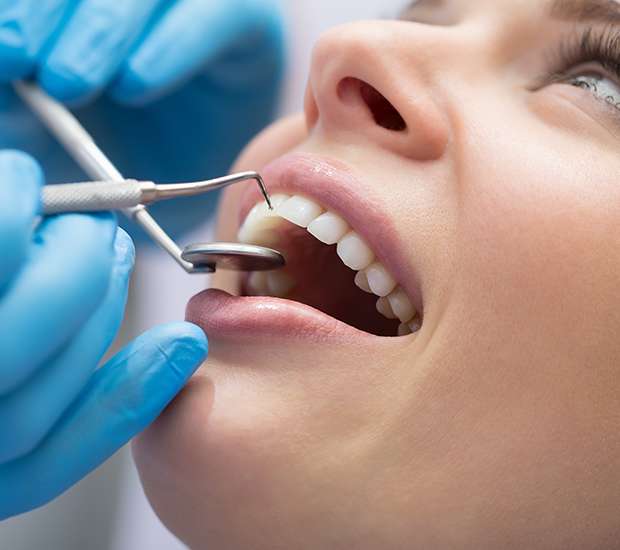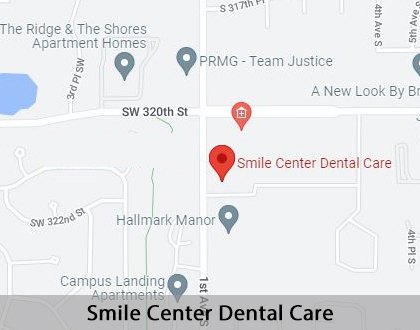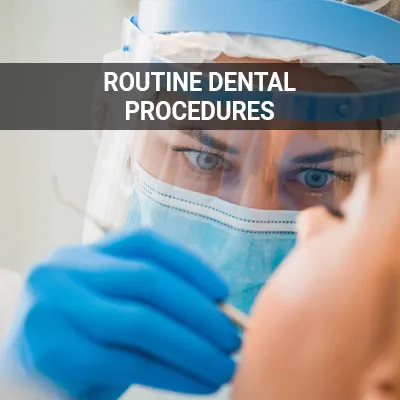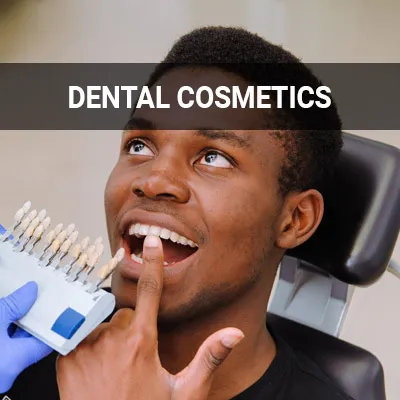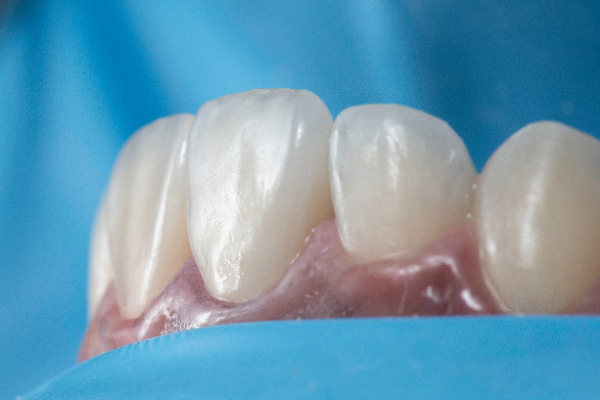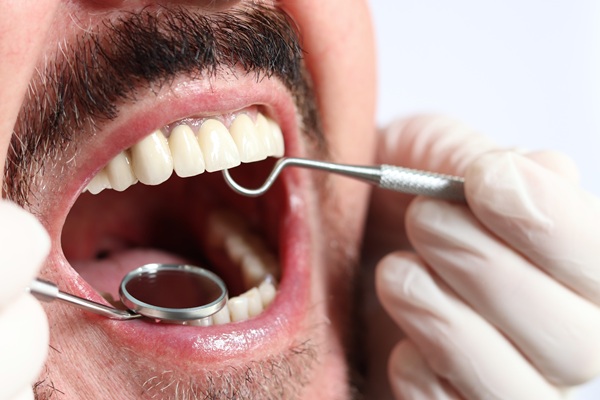Dental Bonding Federal Way, WA
Dental bonding can help patients achieve a more seamless smile when teeth are not in their best condition. Dental bonding is when the dentist applies a tooth-colored resin material to any imperfections and then hardens it with a special light. This adheres the material to the tooth to restore a patient's smile. This procedure repairs chipped, cracked, or discolored teeth.
Dental bonding is a relatively simple treatment that does not typically require any anesthesia. Dental bonding is available at Smile Center Dental Care in Federal Way and the surrounding area. Call us at (253) 336-0023 to schedule an appointment or see whether this procedure is right for you.
Dental Bonding Explained
Dental bonding is the application of a composite resin, which is a tooth-colored durable plastic material, to the surface of the tooth to repair chips or cracks or fix discoloration. This relatively simple procedure normally takes just one visit. The "bond" of dental bonding refers to the process of attaching the resin to a natural tooth to create a seamless look.
Unlike other materials used in dental restoration, composite resin can be molded to the shape of a tooth. This makes it an ideal option for filling cracks and chips. It creates a natural and blended look with surrounding teeth.
“Dental bonding is the application of a composite resin, which is a durable plastic material, to the surface of the tooth to repair chips or cracks, or fix discoloration.”
The Right Patient for Dental Bonding
Tooth bonding is a good option for people who have teeth with only minor damage without any significant decay. It is also an effective option for those who are already happy with the color of their teeth. Since dental bonding does not alter tooth color, patients will want to consider whitening their teeth before the dental bonding procedure.
In addition to fixing chips and cracks, dental bonding can help close the spaces between teeth. It is also a good option for patients who want to change the shape of a tooth. Dental bonding is a cosmetic alternative to a traditional metal filling, or to protect the portion of a tooth's root that may have become exposed from receding gums.
“Tooth bonding is a good option for people who have teeth with only minor damage without any significant decay.”
Dental Bonding Benefits
Dental bonding is a good option for restoring teeth since it is a minimally invasive procedure. This procedure allows patients to keep as much of the natural tooth structure as possible. During the application process, our dentist removes very little to no enamel at all. Minimal work to the enamel allows patients to maintain the natural health and structure of their teeth.
This quick treatment produces high-quality results that appear natural. The composite resin is durable but adaptable and can be adjusted by our doctor in the future after treatment. Dental bonding also protects and restores the function of worn-down, chipped, or discolored teeth.
“This quick treatment produces high-quality results that appear natural.”
Check out what others are saying about our dental services on Google: Dental Bonding in Federal Way, WA
The Dental Bonding Process
Compared to other dental restoration procedures, the bonding process is a relatively short one, lasting an average of 30-60 minutes per tooth. Patients do not need to prepare much ahead of time. Anesthesia is typically not necessary unless a cavity is being filled or drilling is needed.
Once the dentist has selected the resin material that resembles the color of the tooth, the bonding process can begin. The dentist will roughen the surface of the tooth and apply a special liquid. This helps the bonding resin adhere to enamel. The tooth-colored, malleable material is then applied, shaped to the tooth, and smoothed to the correct shape.
A special light hardens the material to the tooth. Then Smile Center Dental Care will further shape and polish it, so it matches the rest of the teeth. The patient is left with a tooth that seamlessly matches the rest of their smile.
“Compared to other dental restoration procedures, the bonding process is a relatively short one, lasting an average of 30-60 minutes per tooth.”
Questions Answered on This Page
Q. What are the benefits of dental bonding?
Q. What are the possible risks associated with dental bonding?
Q. Who is the right candidate for tooth bonding? What can dental bonding be used for?
Q. What does the dental bonding process involve?
People Also Ask
Q. What are the benefits of composite fillings?
Q. How can cosmetic dentistry restore teeth?
Q. Why is it important to find the right general dentist?
Possible Risks of Dental Bonding
Dental bonding is not associated with any major risks. However, there are some potential side effects that patients should be aware of before seeking treatment. Some patients can experience an allergic reaction to the bonding materials, tools, or conditioning liquid used during the dental bonding process.
Although these reactions are rare, patients can visit an allergist before their appointment to test whether they will experience any side effects from the materials. Like any dental procedure, there is also the risk of infection. However, proper cleaning and sterilization will help prevent this from occurring.
“Dental bonding is not associated with any major risks.”
Frequently Asked Questions
Q. Are there any risks with dental bonding?
A. There are no major risks associated with dental bonding. Keep in mind, a dental bond is not as strong as your natural tooth. Since it can chip or crack, it is a good idea to stop habits such as chewing on ice or biting your fingernails.
Q. How much does dental bonding cost?
A. Dental bonding is more cost-effective than many other restorative dental procedures. Costs vary depending on the location of the bond and the extent of the procedure. Check with your insurance provider to see if dental bonding gets covered under your policy.
Q. How long does dental bonding last?
A. With proper care, a dental bond can last for a decade. Touch-ups can be done if our dentist notices some wear and tear. Plan to take care of your bonded tooth just as you would the rest of your teeth.
Q. What kinds of conditions can dental bonding fix?
A. Dental bonding can address a variety of dental conditions. This includes chipped teeth, gaps between your teeth, fixing a tooth that is an odd shape, and even cosmetic fillings. Our staff can help you determine if dental bonding can correct your smile concerns.
Q. How does dental bonding work?
A. To begin, we create a composite resin material that matches the color of your teeth. The teeth are roughened to allow the resin to bond correctly. We will then apply the resin and use a special curing light to harden the resin, bonding it instantly to your teeth. Lastly, we can reshape and polish any areas as needed to ensure they look as natural as possible with the surrounding teeth.
Dental Terminology
Helpful Related Links
- American Dental Association (ADA). Glossary of Dental Clinical Terms. 2024
- American Academy of Cosmetic Dentistry® (AACD). Home Page. 2024
- WebMD. WebMD’s Oral Care Guide. 2024
About our business and website security
- Smile Center Dental Care was established in 2005.
- We accept the following payment methods: American Express, Cash, Check, Discover, MasterCard, and Visa
- We serve patients from the following counties: King County and Pierce County
- We serve patients from the following cities: Federal Way, Auburn, Kent, Des Moines, Tacoma, Fife, Milton, Edgewood, SeaTac, and Algona
- National Provider Identifier Database (1770035289). View NPI Registry Information
- Norton Safe Web. View Details
- Trend Micro Site Safety Center. View Details
Back to top of Dental Bonding
